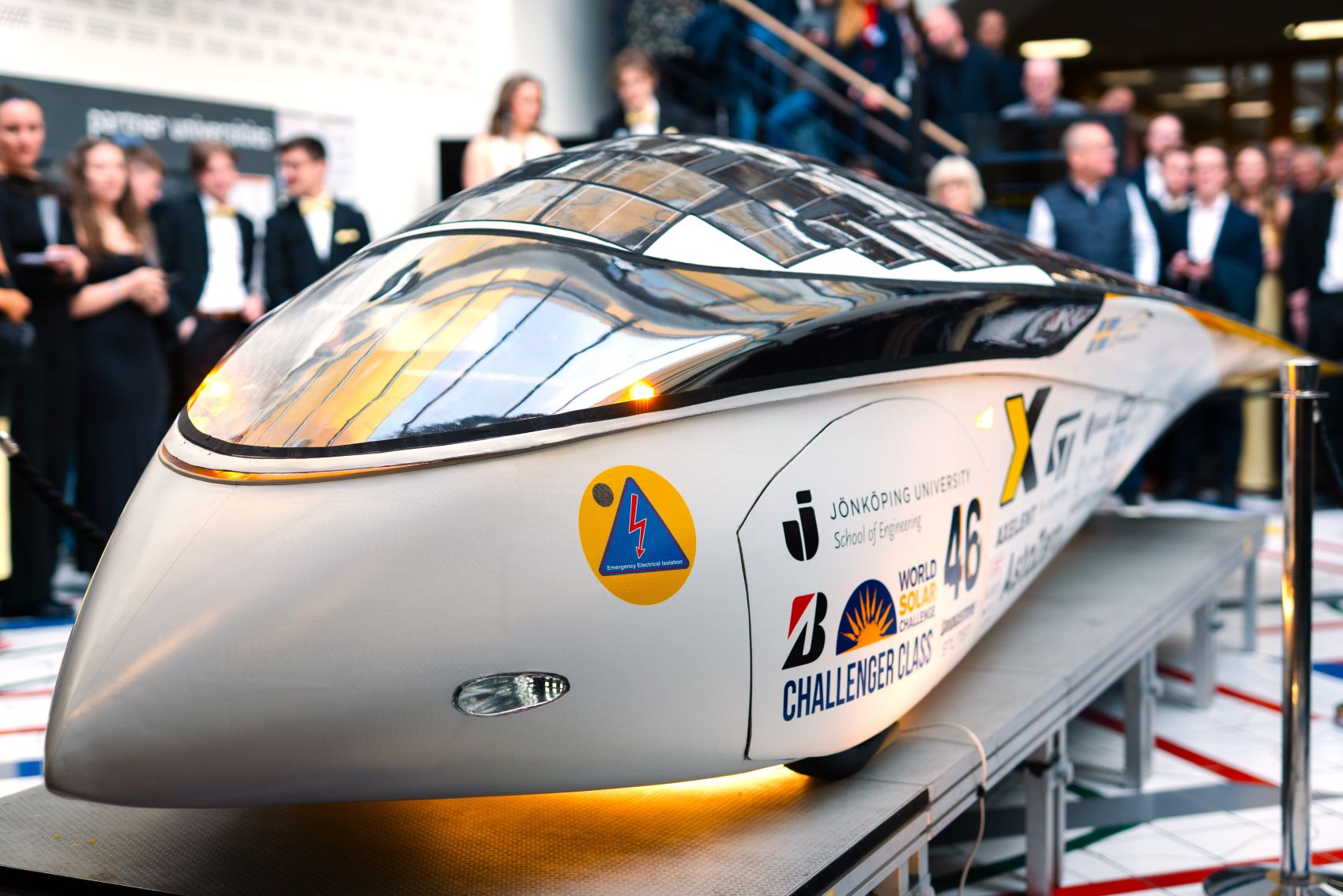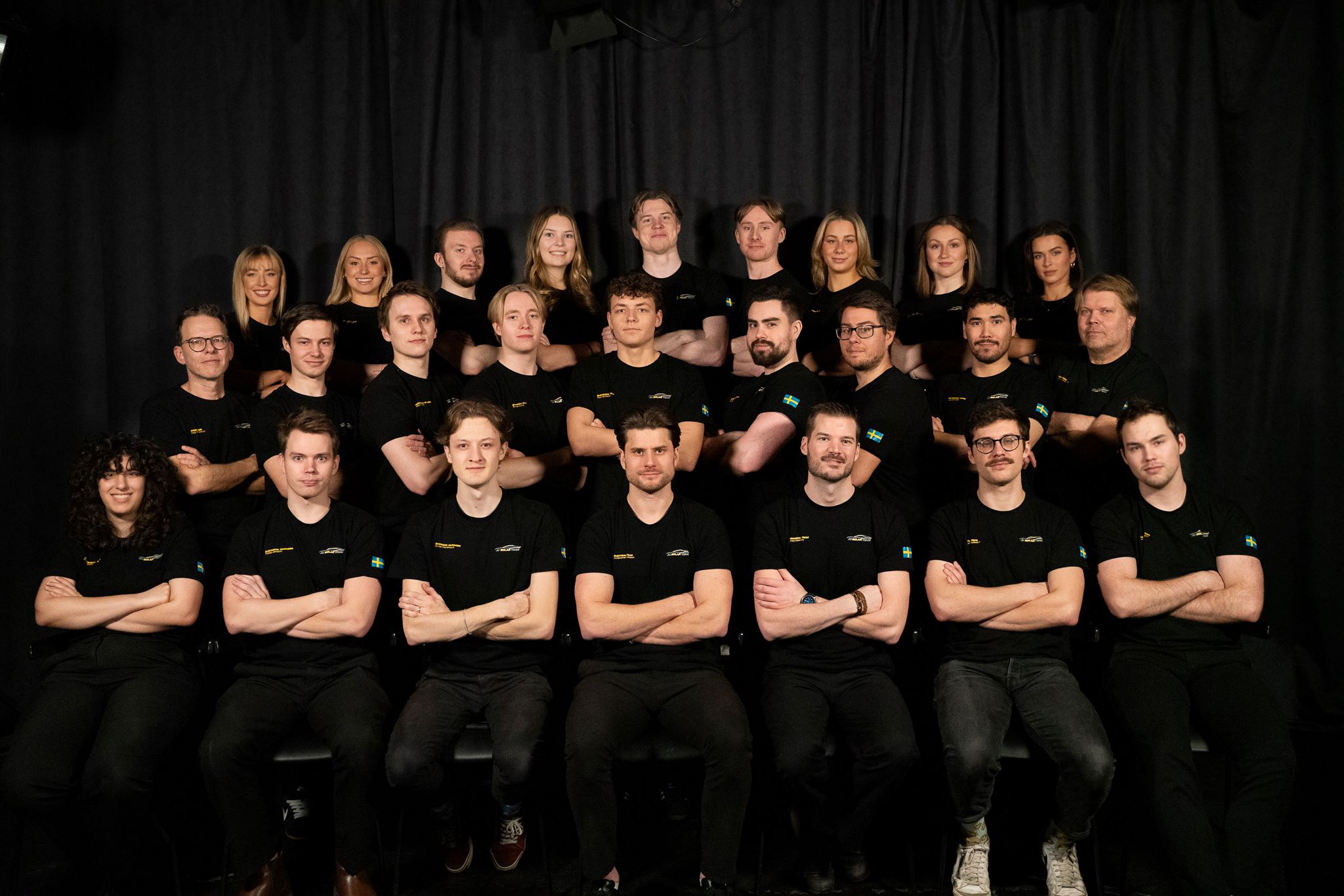
JU Solar Teams solar car is streamlined to reduce drag.
JU Solar Team aims for gold in World Solar Car Championship
JU Solar Team is aiming for gold in the Bridgestone World Solar Challenge in Australia which takes place 24-31 August.
"We are a very good team and believe in our concept that focuses on innovation," says Matilda Svensson Duric, Team Manager for JU Solar Team.
When the Bridgestone World Solar Challenge took place last time in the autumn of 2023, JU Solar Team became the best Swedish team and seventh in the world. Now their goal is to win the competition, which is the world's largest competition for solar cars.
"We are ready to make a perfect effort in Australia and our strategy is to get there as well prepared as possible. We have honed our skills by studying previous teams and solar cars, but also going through everything from food and sleep to driving strategy, logistics and all the control stops, says Matilda Svensson Duric.
Crossing Australia
The competition is 3, 022 kilometers across the Australian continent from Darwin in the north to Adelaide in the south, and the number of turns on the route is easily counted. The solar car project is taught as four separate courses at JU where students develop and build a solar car. They also arrange sponsors for the car and promote it and the team at various events and online. Now they have reached the final goal, to compete in the Bridgestone World Solar Challenge, which is the world's largest competition for solar cars.
"It will be great to get there and compete, but also to experience a new country and a new culture," says Matilda.

Parts of the JU Solar Team at the School of Engineering, Jönköping University. On 24-31 August, they will participate in the Bridgestone World Solar Challenge in Australia, also known as the World Solar Car Championship.
"Not comparable to a normal car"
Ellie Brismar is one of the drivers of the JU Solar Team's solar car.
"It is a bit special to drive and it can't really be compared to a normal car. You sit close to the ground and all the components, and you can't brake suddenly or make fast turns. It is warm, cramped and you don't have a comfortable driving position, but it also keeps you alert and focused," she says.
The driving sessions last between two and six hours and there is a change of driver at each checkpoint. It gets about 60 degrees centigrade in the car and drivers must carry two litres of water.
"I love driving and I do not mind so much that it is uncomfortable an hot. I compete in track racing in my spare time and it gets hot in those cars too," says Ellie.
"Higher average speed"
The driver is in constant contact with the strategy car to know how fast they can drive depending on factors such as road conditions, winds and battery consumption. The JU Solar Team aims to maintain an average speed of around 90 km/h, compared to 88 km/h which was the highest average speed in the Bridgestone World Solar Challenge 2023. Regular traffic and especially road trains will run on the competition route at the same time as the solar cars. These are trucks with several long and heavy trailers, which are common in Australia.
"There may be animals on the roads too, but this does not seem to be a major problem. Kangaroos, for example, appear at dawn and we only drive during the day," says Ellie.
Dag Raudberget and Magnus Andersson, Senior Lecturer in Product Development and Lecturer in Industrial Design at JTH, are both course teachers for the solar car project.
Read more about JU Solar Team here External link, opens in new window.
External link, opens in new window.

Here is the entire JU Solar Team.
- Senior Lecturer Product Development
- School of Engineering
- dag.raudberget@ju.se
- +46 36-10 1676
- Lecturer Industrial Design
- School of Engineering
- magnus.andersson@ju.se
- +46 36-10 1673

